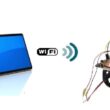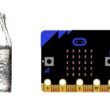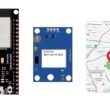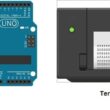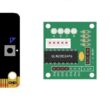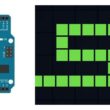OV7670 camera
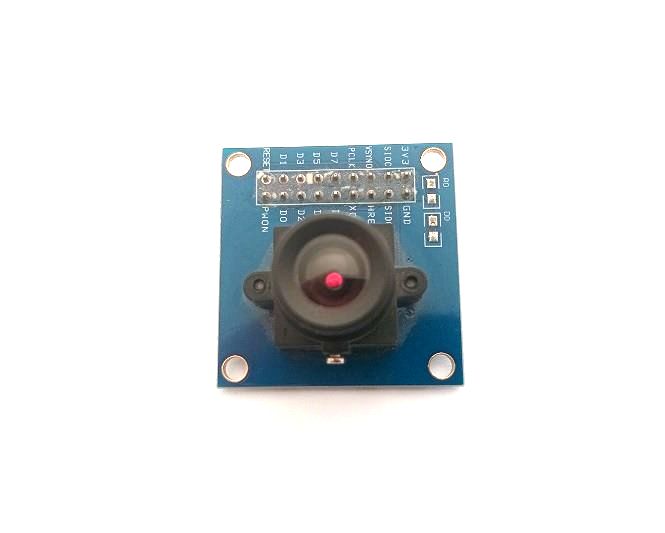
Presentation of OV7670 camera
The OV7670 is a small digital camera module that is widely used in embedded systems for image and video capture. It is manufactured by OmniVision Technologies and features a 1/6-inch CMOS image sensor with a resolution of 640x480 pixels (VGA) and supports up to 30 frames per second.
The OV7670 module has a parallel interface and can communicate with a microcontroller using a variety of communication protocols such as SCCB (Serial Camera Control Bus) or I2C (Inter-Integrated Circuit). It also has a built-in lens and image processing pipeline, which includes color interpolation, white balance, and gamma correction.
The OV7670 module can be used in a variety of applications, including security systems, robotics, and handheld devices such as digital cameras and mobile phones. It is a popular choice for hobbyists and makers due to its low cost and ease of use.
To use the OV7670 module, you will need to connect it to a microcontroller or development board and write software to communicate with the camera module and process the images. There are many libraries and example projects available online that can help you get started with using the OV7670 module in your own projects.
When working with the OV7670 camera module, it is important to note that the module is sensitive to noise and requires careful design of the power supply and signal lines. Additionally, the camera module may require tuning of various image processing parameters to obtain optimal image quality. However, there are many resources available online that can help you get started with using the OV7670 camera module in your own projects.
Composition of the OV7670 camera
The OV7670 is a small CMOS (Complementary Metal-Oxide-Semiconductor) camera sensor that is commonly used in embedded systems, robotics, and other electronic devices. The camera sensor is manufactured by OmniVision Technologies and has the following composition:
Image sensor: The OV7670 features a 1/6-inch 640 x 480 pixel CMOS image sensor that is capable of capturing color images and video at up to 30 frames per second (fps).
Analog signal processor: The camera has an on-chip analog signal processor that is used to convert the analog output of the image sensor into digital signals.
Digital signal processor: The digital signal processor (DSP) on the OV7670 is responsible for processing the digital data from the image sensor and performing various functions such as white balance, color correction, and image compression.
Output interface: The camera supports several output interfaces including Raw RGB, YUV, and JPEG, allowing it to be easily integrated with various microcontrollers and other embedded systems.
Clock generator: The OV7670 has an on-chip clock generator that provides the necessary clock signals for the image sensor, DSP, and output interface.
Lens assembly: The camera sensor is typically sold with a lens assembly that includes a lens and an adjustable focus mechanism.
[/vc_column_text]
Using the OV7670 camera
Using the OV7670 camera requires some basic knowledge of hardware and software design. Here are some general steps to get started with using the OV7670 camera:
Obtain an OV7670 camera module: You can purchase an OV7670 camera module from various online stores or electronics suppliers. The module usually comes with a small circuit board that includes the camera sensor, clock generator, and output interface.
Connect the camera module to your microcontroller or development board: The OV7670 camera module typically connects to a microcontroller or development board using a flexible flat cable (FFC) or other interface. You will need to refer to the camera module datasheet and your microcontroller documentation to ensure proper connections and signal levels.
Configure the camera settings: The OV7670 camera has many different configuration options that can be set using I2C communication with the camera module. These settings include image resolution, color depth, exposure, and various image processing parameters. You will need to write code to set these configuration registers based on your desired camera behavior.
Capture images or video: Once the camera module is configured, you can capture images or video frames using the camera's output interface. The output data can be transferred to your microcontroller or development board for further processing or storage.
Process and display the images or video: The captured images or video frames can be processed and displayed using software running on your microcontroller or development board. This might include converting the image data to a different format, applying image processing filters or algorithms, or displaying the images on an attached display.
The OV7670 camera and robotics
The OV7670 camera is commonly used in robotics applications for various purposes, such as object recognition, navigation, and surveillance. Here are some ways in which the OV7670 camera can be used in robotics:
Object recognition: The OV7670 camera can be used in robotics to identify objects in its field of view. By analyzing the captured images, the robot can identify and locate objects based on their color, shape, or texture. This can be useful for tasks such as sorting, picking, and placing objects.
Navigation: The OV7670 camera can be used in robotics for navigation purposes, such as detecting obstacles or landmarks. The camera can be mounted on a robot and used to capture images of the surrounding environment. By analyzing the images, the robot can determine its position and orientation relative to the surroundings, and navigate accordingly.
Surveillance: The OV7670 camera can be used in robotics for surveillance purposes, such as monitoring a building or outdoor area. The camera can be mounted on a robot or stationary platform, and used to capture images or video of the area. By analyzing the images, the robot or system can detect and alert operators of any potential security threats or suspicious activities.
Gesture recognition: The OV7670 camera can be used in robotics to recognize human gestures, such as hand movements or facial expressions. By analyzing the captured images, the robot can identify the gestures and respond accordingly. This can be useful for human-robot interaction or control.















